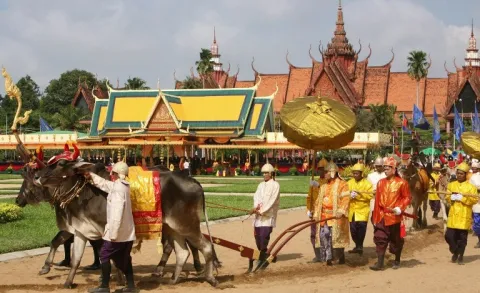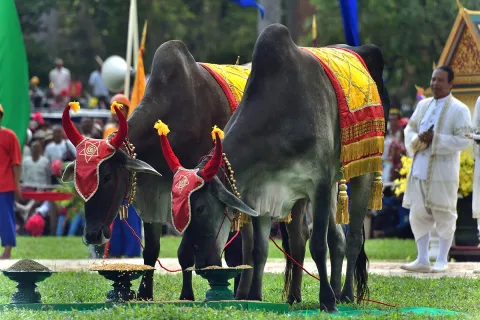News

History of Wat PhnomNew Post
Wat Phnom is a significant and revered Buddhist temple located in Phnom Penh, the capital city of Cambodia. The temple holds historical, cultural, and religious importance, and its history is deeply intertwined with the development of the city itself. Here’s a detailed overview of its history:
1. Origins and Legends:
-
Foundation Legend: The legend surrounding Wat Phnom dates back to the 14th century. According to popular belief, a wealthy widow named Penh discovered four statues of Buddha on the banks of the Tonle Sap River. She decided to build a hill (phnom in Khmer) and a small shrine to house the statues. This act led to the establishment of the temple on the hill, which became known as Wat Phnom, meaning "Hill Temple."
-
Historical Significance: The temple was originally constructed in 1373, and the hill itself was artificially created, standing about 27 meters tall. Wat Phnom quickly became a central religious and cultural site, serving as a focal point for the city.
2. Development and Renovations:
-
Early Modifications: The temple has undergone numerous renovations and expansions over the centuries. During the late 15th and early 16th centuries, the original structure was expanded, and several pagodas were added to accommodate the growing number of devotees.
-
French Colonial Era: During the French colonial period in the late 19th and early 20th centuries, Wat Phnom saw further renovations and restorations. The French administration helped preserve the temple’s historical and architectural integrity.
-
Post-Khmer Rouge Era: After the fall of the Khmer Rouge in 1979, Wat Phnom was restored and reopened as a major symbol of resilience and cultural revival in Cambodia.
3. Cultural and Religious Importance:
-
Buddhist Practices: Wat Phnom is a key center for Buddhist worship and ceremonies in Phnom Penh. The temple is known for its large stupa, which houses relics and is a place of pilgrimage for Buddhists. The site is also famous for its annual festivals, particularly the celebration of the Buddhist New Year and the annual Wat Phnom Festival, which attracts thousands of devotees and tourists.
-
Cultural Hub: Besides its religious significance, Wat Phnom has become a cultural landmark in Phnom Penh. The surrounding area is a popular spot for both locals and tourists, with a park and a large statue of King Jayavarman VII located nearby.
4. Modern Significance:
-
Tourist Attraction: Today, Wat Phnom is one of Phnom Penh's most visited landmarks. It offers insights into Cambodian religious practices and the architectural beauty of traditional Khmer temples. The temple’s hill provides a panoramic view of the city, enhancing its appeal as a tourist destination.
-
Preservation Efforts: Ongoing preservation efforts ensure that Wat Phnom remains a vital part of Cambodia’s cultural heritage. The temple continues to be an important site for both religious observance and cultural activities.


